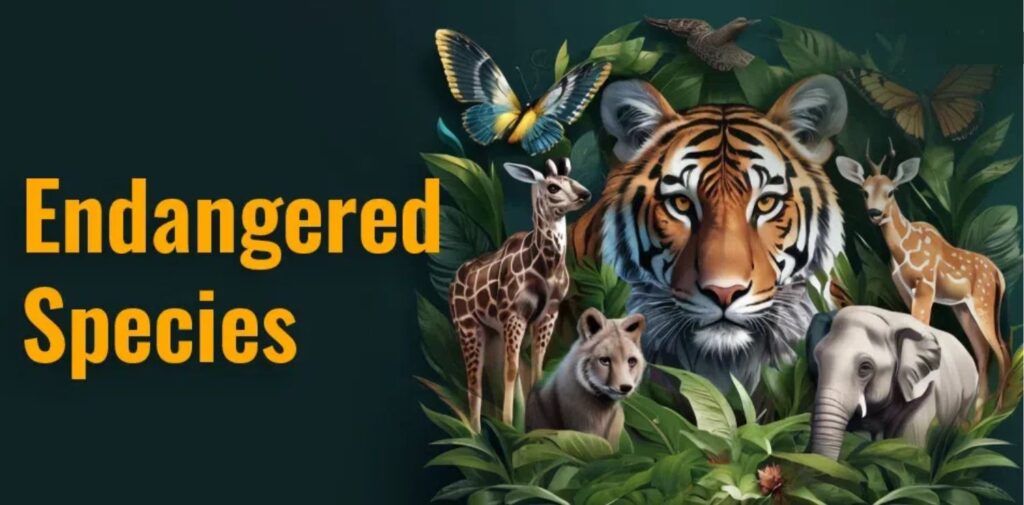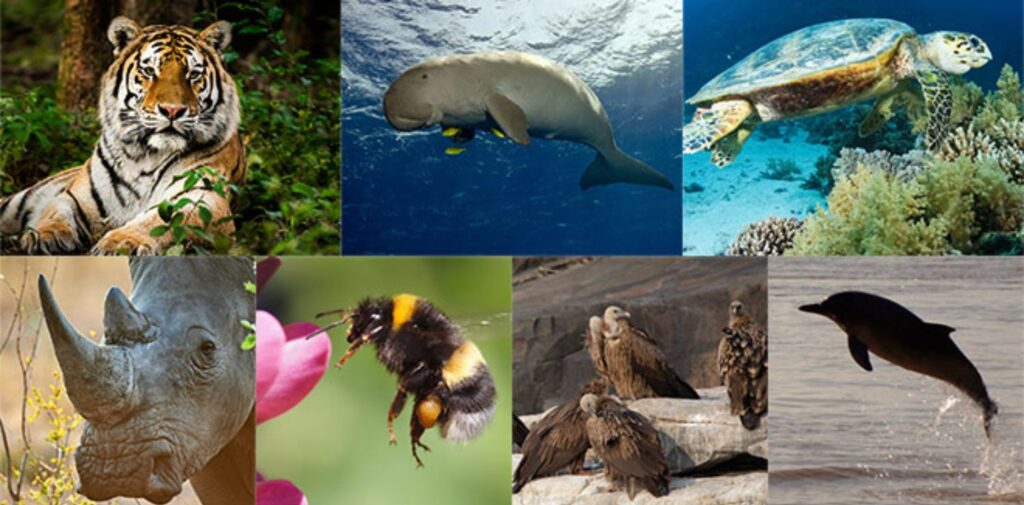Every year, the third Friday of May is observed as National Endangered Species Day. This year, it falls on 17th May. It is a day to raise awareness about endangered animals and plants, and to encourage people to take action to protect them. In India, which is home to a rich variety of wildlife, this day holds great importance. Many species are on the verge of extinction, and if we do not act now, future generations may never see them again.
India is known for its forests, rivers, mountains, and oceans – all of which are home to a wide range of animals and plants. But due to human activities like deforestation, pollution, hunting, and climate change, many of these species are facing serious threats. National Endangered Species Day is not just a day to talk about these problems, but a reminder to become a part of the solution.
Understanding endangered species
An endangered species is a type of plant or animal that is at high risk of becoming extinct in the near future. Extinction means that the species will no longer exist on Earth. The main reasons for a species becoming endangered are habitat loss, pollution, illegal hunting, and climate change. In India, species like the Bengal tiger, Indian elephant, one-horned rhinoceros, Asiatic lion, and snow leopard are either endangered or vulnerable. Many birds, marine animals, and even plants also fall into the endangered category.
The International Union for Conservation of Nature (IUCN) creates a Red List of threatened species. This list helps identify which species are at risk and need protection. The Indian government also has its own measures and laws, like the Wildlife Protection Act of 1972, to help protect endangered species. But the responsibility is not just of the government; every citizen should care about our natural heritage.

Why is it important to save endangered species?
Every living thing plays a role in maintaining the balance of nature. If one species disappears, it can affect many others. For example, if tigers vanish, the number of deer and wild boars will increase, which will lead to overgrazing and harm the forest. Forests are important for clean air, water, and climate control. So, saving one species helps save many others, including us humans.
Endangered species are also a part of our culture and identity. The peacock, tiger, elephant – all these animals have deep connections with Indian traditions, festivals, and folklore. They are featured in our stories, paintings, and even in temples. Losing them would be like losing a part of our heritage.
Moreover, wildlife supports eco-tourism, which helps create jobs and support local economies, especially in rural and forest areas. Protecting wildlife means protecting the environment and also supporting livelihoods.

Major endangered species in India
India has a long list of animals and plants that are endangered. Here are some of the major ones:
Bengal Tiger – The national animal of India, found in Sundarbans, Madhya Pradesh, Uttarakhand, and Assam. Though Project Tiger helped increase its numbers, it is still under threat due to poaching and habitat loss.
Asiatic Lion – Found only in the Gir Forest of Gujarat. Their population is limited to one area, which makes them very vulnerable to disease or natural disasters.
Indian Elephant – Often worshipped in India, these gentle giants are facing problems due to habitat loss and human-elephant conflict.
One-Horned Rhinoceros – Mostly found in Assam’s Kaziranga National Park. Poaching for its horn is the biggest threat.
Snow Leopard – Found in the Himalayan regions, this beautiful big cat is rarely seen and hard to track, and its population is decreasing due to climate change and human disturbance.
Great Indian Bustard – One of the heaviest flying birds, found in Rajasthan and Gujarat. Its numbers are dangerously low due to loss of grasslands.
Ganges River Dolphin – Declared India’s national aquatic animal, it is found in the Ganga and Brahmaputra rivers. Pollution and fishing nets are major threats to it.
There are many others, like the red panda, Nilgiri tahr, blackbuck, and several species of turtles, frogs, and birds. The list keeps growing as more species come under threat.
What is being done in India to protect them
The Indian government, along with various non-governmental organizations (NGOs), scientists, and local communities, is working to save endangered species. Here are some of the important efforts:
Wildlife Protection Act, 1972 – This law provides protection to wild animals and plants and prohibits hunting.
Project Tiger – Started in 1973, this project was one of the first major efforts to protect a species. Today, there are over 50 tiger reserves in India.
Project Elephant – Launched in 1992 to protect elephants and their habitats.
Protected Areas – India has more than 100 national parks and over 500 wildlife sanctuaries where animals can live safely.
Breeding Programs – Zoos and wildlife parks run special breeding programs to increase the number of rare animals.
Community Involvement – Forest communities and local people are being encouraged to take part in conservation. Programs like eco-tourism, forest guards from local tribes, and awareness campaigns have helped.
Technology – Use of camera traps, drones, and satellite tracking is helping scientists to monitor and protect wildlife better.
Education – Schools, colleges, and nature clubs are promoting awareness about wildlife conservation.
Despite these efforts, challenges remain. Illegal poaching, encroachment into forest areas, pollution, and lack of awareness are still big problems.

What can you do to help?
Many people think that saving endangered species is the job of the government or forest officers. But the truth is, we all can play a role. Here are some simple things you can do:
Learn and spread awareness – Read about endangered species and share the information with your friends and family.
Avoid products made from animal parts – Do not buy items made from ivory, tiger skin, shells, or horns.
Plant trees – Trees help provide shelter and food for animals and birds.
Save water – Many aquatic species are endangered because of polluted or shrinking water bodies.
Say no to plastic – Plastic waste is killing marine animals and polluting rivers and forests.
Support wildlife groups – Donate or volunteer with NGOs working for wildlife conservation.
Visit eco-friendly wildlife parks – Support ethical tourism and learn about animals in their natural homes.
Teach children – Encourage young minds to respect nature and animals.
The way forward: National Endangered Species Day
India’s wildlife is a treasure that has been part of our history, culture, and natural wealth. National Endangered Species Day is a powerful reminder that we must act now to save what is left. We cannot undo the damage done in the past, but we can shape a better future by being more responsible.
Every plant and animal has a right to live, just like humans do. Protecting them is not just a duty but a necessity for our own survival. As Indian citizens, we should be proud of our biodiversity and work together to protect it.
Let us not wait for another species to vanish before we act. Let us use this National Endangered Species Day as a new beginning – to care, to protect, and to speak up for those who cannot speak for themselves.
Together, we can ensure that our children grow up in a world full of life, color, and the magic of nature.




